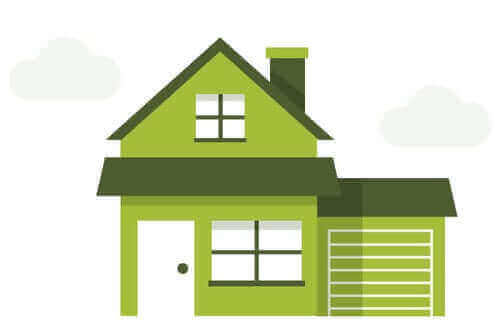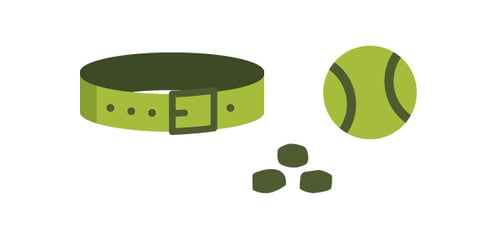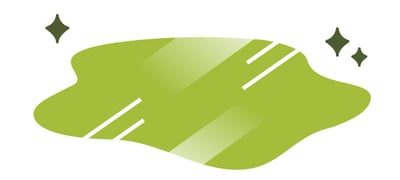
So you’ve decided you’d like to introduce a dog into your family and have settled on rescuing a dog. Congratulations! Adopting a dog can be a tough transition, so check out these helpful tips for surviving the first seven days with your new dog.
By adopting a dog, you are giving a new lease on life to a dog that may have been mistreated in the past but is still deserving of a loving foster home. Shelter dogs often come with emotional problems. The new dog will need time to adjust.
Reports by the ASPCA show that in the United States 6.3 million pets enter shelters annually. Canada Human revealed that in 2018, 81.,000 cats and a little less than 30,000 dogs were in shelters.
There are many benefits to adopting a rescue dog from the Humane Society, rescue, or animal shelter, but they will also need a lot of rehabilitation and maybe even renaming.
Providing a home to a shelter dog is not for the faint of heart but the rewards are undeniable. With time and patience, you can have the perfect furry companion.
The first week is a really important time to establish good routines, create a safe and loving space for your new dog, and make a bond that will last for years to come. Shelter dogs are often grateful to have a new and loving home to call their own.
The first few days after you bring your newly adopted dog home from the rescue group need to be approached with care and intention to make sure that the foundation of your new family dynamic is set correctly for everyone, including your new dog.
Preparing To Adopt Rescue Dogs
Before you bring your dog house, you’ll need to make sure your house is completely puppy-proof. This means looking out for anything that could be dangerous to them and either removing it or making it safe.
Puppy adoption is exciting, but puppies are notoriously too curious for their own good. You have to think about the things that are accessible to them; kids’ toys, household chemicals, and any wires or electrical equipment.
You’ll also need to do the same in your garden – make sure there are no gaps in the fence and be aware of plants that could be dangerous for your new dog.
After you have made sure your house is safe, you’ll need to buy all the equipment you need for your dog. As a bare minimum, you’ll need a dog bed, dog food, water bowl, a collar, a leash, a baby gate, some toys, a crate, and an ID tag with your name, phone number, physical address and email address. .
Check out our new puppy checklist to make sure you have the right away tools to get your new rescue dog started off on the right paw.
Day 1: Bringing Your Dog Home

The first day with a foster dog will be full of a lot of firsts for you and your dog. Before you go to collect your dog, make sure you have a safe space set up for them at home, like a crate or a bed that is just theirs. If you’re collecting them in the car, think about a safe and great way to transport them home too.
Don’t go overboard on the first day. Keep everything as minimal as possible. Try to create a calm environment for your dog with plenty of downtime so that they don't get overwhelmed all at once. If possible, take children and other pets out of the house for the first few hours while your dog settles in.
Try and minimize the amount of space they have to explore to just a couple of rooms so they don’t feel unnecessarily overwhelmed. After the first few hours, you can introduce everyone in the family to your new dog.
Wait until they are calm and relaxed, and let your new dog meet them one by one in the home environment. Always allow the dog to go up to new people and pets if and when they want to. This will help build confidence with each new experience.
For the first night in the pet’s new home, you should ensure that dogs sleep wherever their designated sleeping new place will be. Perhaps it’ll be in a crate downstairs or maybe at the foot of your bed in a basket.
Don’t forget to take them out to go to the bathroom before bedtime, and make sure they are comfortable. Many pups who come from puppy mills suffer from anxiety and may experience submissive urination but with time you can help your furry friend overcome the problem in the new home..
Don’t be surprised if your new pup whimpers throughout the night when left alone; this is normal behaviour for a dog who is scared and in a new place. In the breeding facilities, puppies are usually close to litter mates, their mother, or other dogs which provide comfort. However, now the young dog finds itself in an unfamiliar environment so will need extra comfort to adjust.
When your dog whimpers, gently reach over right away and give them a little stroke for the first couple of times in an attempt to calm them down. If this doesn’t work, you will likely have to ignore the behaviour until they learn to self-soothe and relax. Puppy mill dogs are often prone to feeling insecure.
Day 2: Get to Know Each Other

Day two is the first day your dog will wake up in their brand new home. Spend the second day getting to know your dog and allowing them to get to know you.
Keep the space that they are allowed to explore limited to just a few rooms for the second day too, they already have a lot of new experiences to process so don’t overwhelm them.
If you work, it would be great to take the first few days off so you can spend this time getting to know your dog and helping them adjust to their life.
If possible, you should spend the whole day with them. Allow them to come over to you if they’d like to. Try out a few tricks to see how much they might already know (or not know).
Take them for a walk to let them get accustomed to your neighbourhood and usual walking routine. Make sure you keep them on a leash while you’re getting to know them and their behaviours.
These first few days are vital in establishing a positive bond between the two of you and other family members if they will also be a significant presence in your new dog’s life.
Day 3: Develop Trust

On the third day, you can start to expand the amount of space your fur baby has to explore in the house. Keep in mind that developing a trust-filled relationship will take time. Your dog has to get used to you.
Spend time with each other each day to build the level of trust. Soon your furry friend will become your best friend.
You will still need to keep a very close eye on them, and at any point that you can’t be with them, limit the area they have to explore to just one room. You can invest in baby gates to section off rooms, or even better, a crate or ex-pen.
If there are children or other pets in the home, encourage them not to approach the dog unless she comes over to them for attention.
This will ensure that your new dog doesn’t feel overcrowded and can adjust to their new life in their own time, without any pressure.
To develop trust between you both, never shout or use any kind of punishment. Dogs respond well to positive training methods rather than an alpha male approach. You can often use your email address to sign up for information on positive training methods at various websites.
Day 4: Start to Create a Routine

Now that your dog is beginning to trust you and you know them a little better, you can start to introduce a routine that will help to ensure they feel safe and secure and get used to the new environment.
For their routine, you’ll need to work on meals, walks, time for training, rest periods and brain games, which will keep them mentally stimulated. Spend time at the dog park so your pooch can burn off energy and you can both bond over a game of fetch.
You can use a crate to encourage periods of rest. A good routine will help your dog to settle in quickly; an inconsistent daily routine can lead to separation anxiety in your dog as they will be worrying about what to expect next.
Dogs like to have a predictable routine, especially those canines that have been in animal shelters or sold from pet stores because they haven’t had the best start to their lives.
Day 5: Begin Training

It can be challenging to train your new pup because the likelihood is that they’ll be bringing a lifetime of bad habits with them.
You’ll need to have lots of patience and an abundance of treats and toys for your new best friend!
Try not to expect too much from your dog in the few weeks, they’ll need to build up their level of trust in you before they start to want to please you.
Start off with basic obedience training such as sit. Always carry out any training in an area free from distraction. Make the session positive, and never shout or get cross. Keep the sessions short but frequent throughout the day.
You can also enroll in obedience class with your furry friend where they will learn socialization skills by meeting new people and other animals.
Day 6: A Visit to the Vets

Ideally, you will have already found a vet before bringing your dog house. When bringing home a shelter dog, the shelter might even be able to offer suggestions of a veterinarian in the local area.
Your dog will need a checkup within a few weeks of bringing them into your home. This can be quite a stressful experience for your dog, as the clinical environment might remind them of the rescue group center in which they used to live in.
To prepare your new pet for this visit, you can take a look at your dog’s ears, mouth and paws at home to get them used to this type of interaction.
It might help to just have a visit to the vets as a social call, and perhaps give him a treat while you’re inside chatting to the vet to get the pet used to the environment.. Then leave and return a few days later for her checkup.
Your vet might be able to offer help on their diet and nutrition and recommended exercises as well as tend to any medical needs they might have.
Day 7: Dealing With Destructive Behaviors

Now that your new dog has had a few days to settle in, you might start to see some destructive behaviours coming out.
Many dogs that come from challenging home situations and animal shelters will have behaviour problems stemming from fear and anxiety about their previous experiences.
It’s even possible that the reason they ended up in a rescue center was that their previous owner wasn’t well equipped enough to train them adequately.
Some of the most common behaviors you may see include; “accidents” in the house, chewing, excessive barking, pulling on the leash, jumping up, no recall and sometimes even aggression.
Each of these things will need careful retraining, but here are some quick tips for each one.
Accidents in the house
If your new dog isn’t house-trained, you’ll need to treat them very much like a puppy and retrain them. Watch your dog constantly and look out for any signs that they have to pee. Sniffing, whining and circling are all signs that they might need to go.
Take them outside immediately if you spot any of these signs. It will also help to stick to a regular feeding schedule and frequently take them out to use the bathroom.
Don’t get angry with them or scold them; always try to stay positive, even when there are accidents.
If your new dog is still having accidents after the first few weeks despite a consistent effort to house train them, take them to a vet to check for any medical reasons behind this.
If bringing home a rescue dog needs a little more help quickly learning the ins and outs of potty training, check out our Puppy Potty Training Tips.
Chewing
Something that not everyone thinks about before they adopt a new rescue dog is the damage they can do to your house. Rescue dogs often need a little time to adjust to their new home, and some come with anxiety from abandonment or abuse issues. No matter how young or old your new dog is, destructive chewing is something you need to be prepared for.
Any destructive behavior issues, such as chewing, need to be positively redirected. If you spot them chewing the leg of a chair, give them an appropriate chew toy instead. Don’t leave things on the floor that they can chew and puppy-proof your house. Visit the pet store or Homes Alive pets to stock up on chews and dog toys.
Make sure they have activities and distractions to prevent boredom and destructive behaviours while they are settling into their new environment. The newly adopted dog will need chews and toys to occupy them and meet their chewing needs. Rescue dogs might need extra chew toys to enjoy if they aren’t used to having such items.
Barking
If your dog is barking a lot, there is usually a reason behind the barking. Your dog may bark if they are lonely, bored, not getting enough attention, stressed or feel the need to protect the house.
You’ll need to figure out which one of these behaviors is the root cause and then tackle that reason. For example, if your dog is bored, you can try to mentally stimulate them more and play brain games such as a treasure hunt or hide and seek.
Pulling on the leash
To train how long should I walk my dog patiently alongside me, treat training a rescue is often the best method. Each time your dog is walking, how you want them to, reward them with a treat.
If they are struggling with this concept, standstill each time he tries to pull, and when he stops puldling, reward him. For more tips on loose-leash training, check out How to Stop Your Dog From Pulling on Leash.
Jumping up
If your dog tries to jump up at you, ignore him and turn your back. Without any attention, they should soon tire of this behaviour.
Practice introductions often, and reward them when they approach correctly. This won't happen overnight and will require a consistent approach from you and everyone else in your house to help the dog understand the appropriate behaviours for getting your attention.
Aggression
Depending on the level of aggression, you might need to seek professional guidance from a dog trainer or a local animal shelter. If they bite or snap at you, growl or snarl or do anything that makes you feel afraid, then it is an excellent time to seek help.
The longer the behaviour is allowed to go on, the harder it will be to fix it. Your dog is only reacting out of fear or anxiety, so a trainer can help you isolate the issue and find safe ways to help your dog feel at ease.
If your dog's aggression is isolated to meeting strangers on your daily walks, then you might be dealing with leash aggression. Learn how to build your dog's confidence and break this intimidating behaviour in Tips for Overcoming Leash Aggression in Dogs.
One Week Onward - Adopting a Rescue Dog
It can take up to six months for your new dog to fully settle into your home and their new life, so don’t be disappointed if, after the first week, they aren’t perfectly behaved and fitting in well.
Adopting a dog is a huge commitment, and you should be prepared to invest a lot of time and love into your dog. Rescue dogs from an animal shelter often come with some behaviours and routines that you will need to train them out of, so don't expect a perfectly trained dog just because he's not a puppy anymore.
Bringing a new pet into the family is an exciting time. You need to consider all aspects of your new dog's health and needs, including diet, dog training classes, routine, exercise, and don't forget fun!
FAQs
- What is the process of adopting a rescue dog?
The process is remarkably straightforward and typically involves filling out an application, meeting the dog, and going through an adoption screening. It may also include a home visit and an adoption fee. - How much does it cost to adopt a rescue dog?
The adoption fees can vary depending on the rescue organization. - Are rescue dogs good pets for families?
Rescue dogs can make great family pets. However, it's important to consider the dog's temperament, energy level, and any specific requirements or restrictions they may have. Some rescue organizations provide information on a dog's suitability for different households. - What should I expect when bringing a rescue dog home?
It's important to give the dog time to adjust to their new environment. They may need patience, training, and guidance to settle in. - Can I adopt a specific breed through rescue organizations?
Yes, there are rescue organizations that specialize in specific breeds. - What are the benefits of adopting a rescue dog?
Adopting a rescue dog not only gives them a second chance at a loving home but also provides you with a loyal and grateful companion.
.png?width=200&height=66&name=logo%20(1).png)





